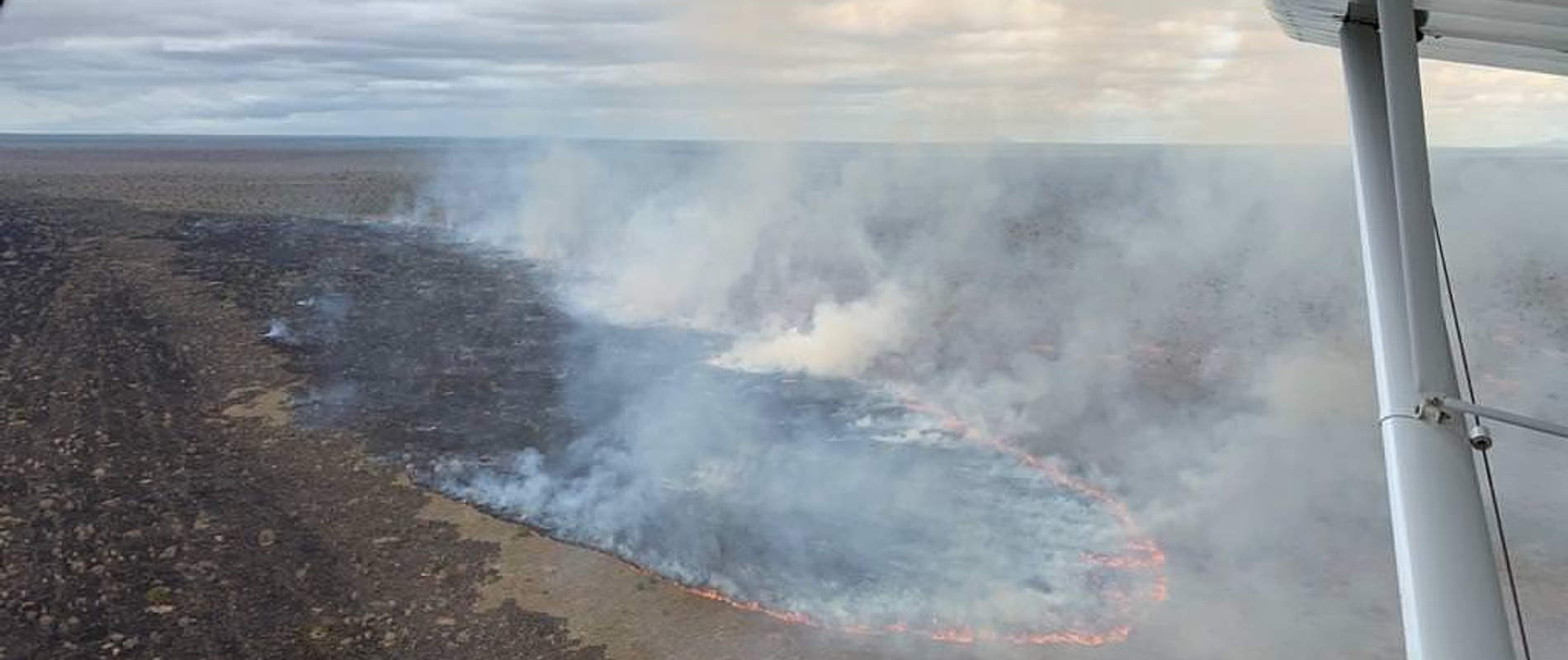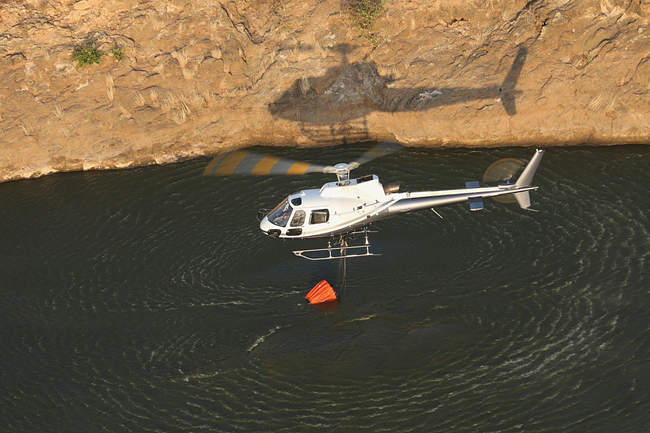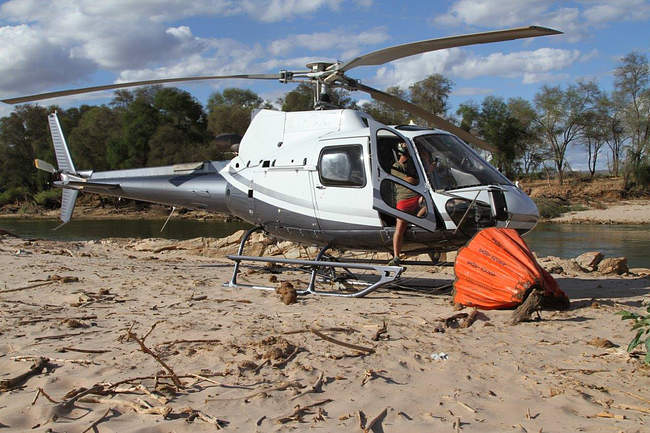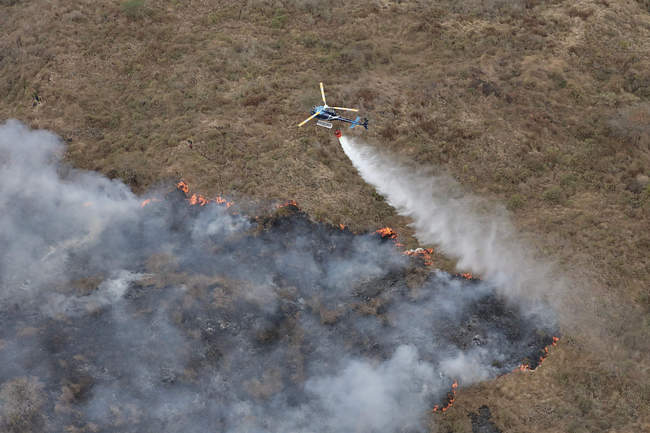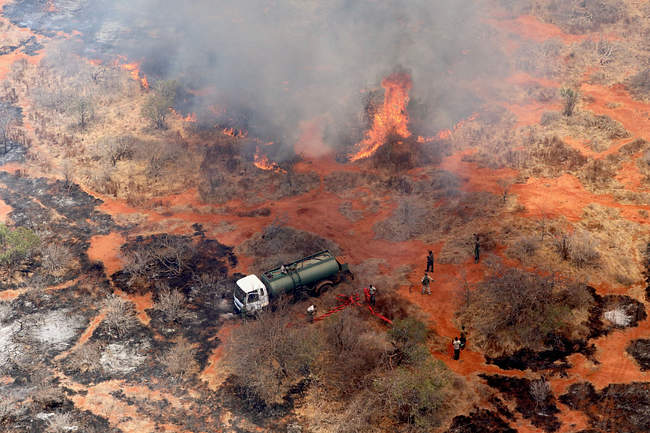This year continues to present one of the most challenging fire seasons in decades and September was another month dominated by bushfires, with extensive aerial efforts undertaken as part of the SWT's firefighting operations.
The primary cause of these fires is the abundance of fuel, in the form of long grasses and plentiful vegetation, left over from some of the best rains that Tsavo has seen since 1998. It is no coincidence that it was the dry season following the 1998 El Niño rains when Tsavo last saw fires on a similar scale.

For our fixed-wing aircraft fires mean a combination of scouting for new fires and assessing ongoing fires while helping to direct ground and helicopter efforts to combat the outbreaks. In September, our own helicopter, as well as helicopters hired from Tropic Air, used bambi buckets to drop huge quantities of water on a multitude of fires, successfully extinguishing several fires. The most serious of these fires was one which was started in the Tsavo Triangle, more details of which can be read here. Several other fires, mostly in the Chyulus, required aerial coverage and water drops by helicopter, with well over half of the month being dedicated to fire-related flights.
As so much time was spent tackling the fires, few general patrols were conducted in areas which might have yielded evidence of poaching. However, the airwing was still able to assist with several operations targeting illegal charcoal burning in and out of the Park.
Only one new elephant carcass was recorded in the month. It was an old carcass, with 1 intact tusk visible from the air. Upon follow-up from a ground team, the second tusk was located nearby, and both were handed over to KWS to be kept in safe storage.
Livestock remains a problem in both Tsavo East and Tsavo West National Parks. In Tsavo East, a fairly significant increase in livestock was noted along the Tiva River, approaching Ndiandaza, which subsequently decreased following a response by KWS ground teams. On KARI Ranch, bordering the Chyulu Hills, over a dozen camel bomas were noted.
Wildlife highlights included sightings of charismatic carnivores, including wild dog, many sightings of lion and one cheetah.
